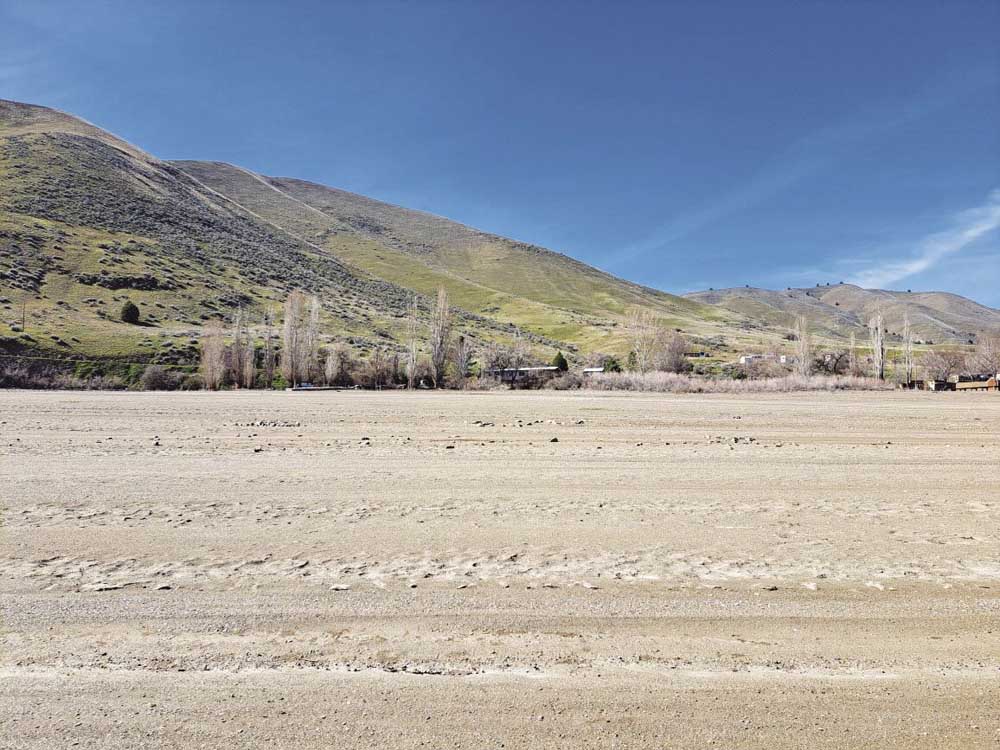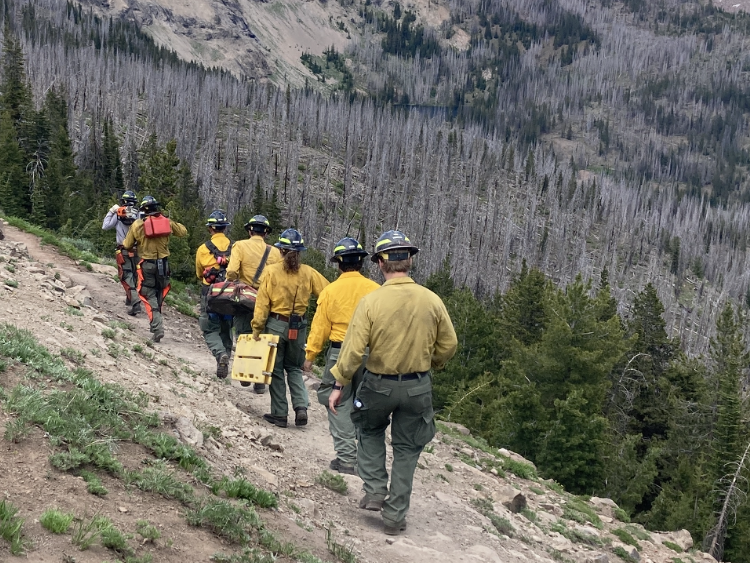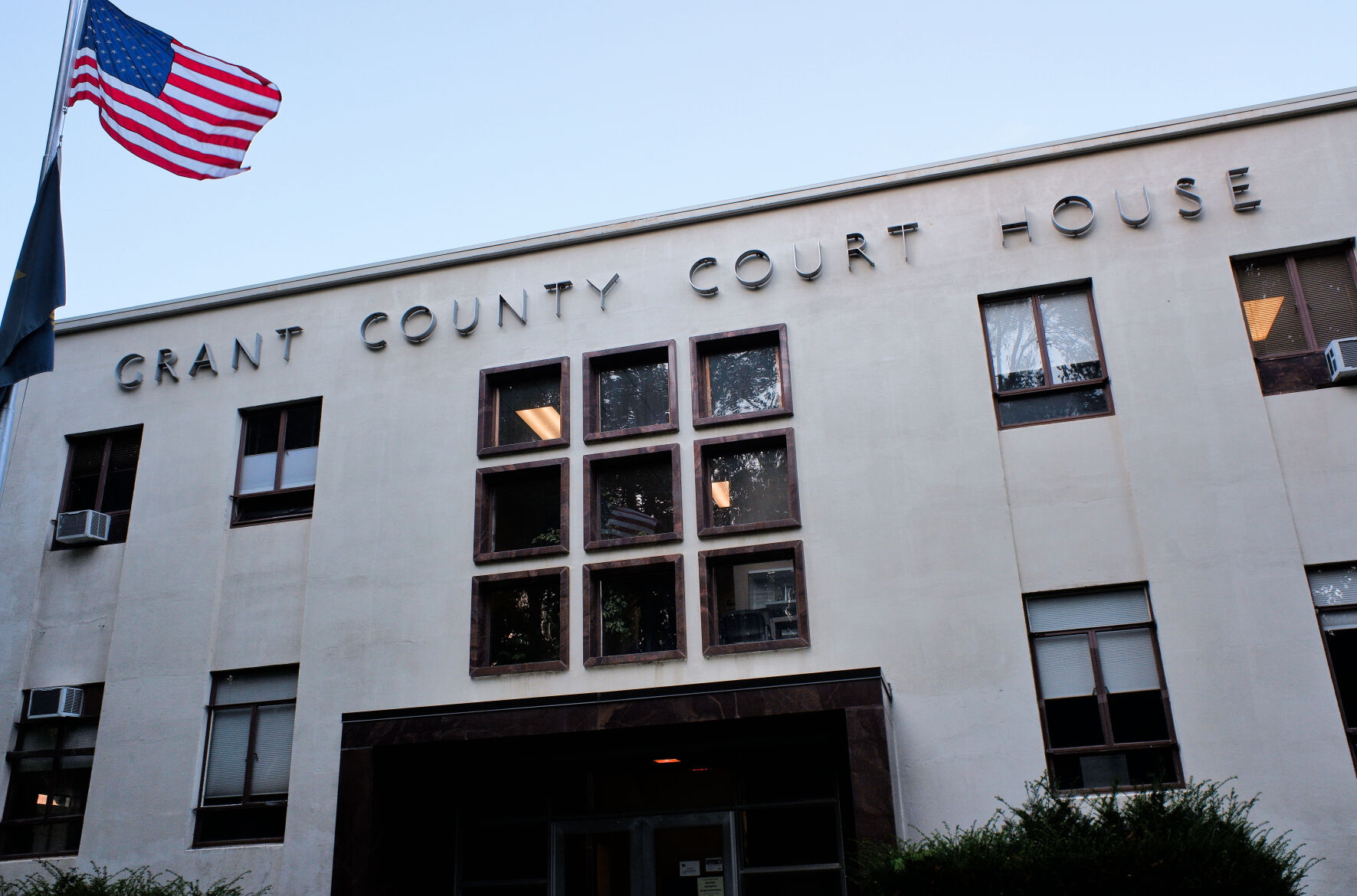Shrunken reservoir: Prospect of major spring runoff prompts Idaho Power Co. to draw down Brownlee Reservoir in Baker County, leaving boat ramps dry
Published 11:00 am Sunday, March 24, 2024

- With Brownlee Reservoir nearly 50 feet below full, there is a long stretch of shore as seen here in mid-March 2024 between Richland and Huntington.
RICHLAND — Boat ramps at Brownlee Reservoir that are stranded above the water line now will be submerged later this spring as the reservoir on the Oregon-Idaho border begins to refill.
That refilling will start soon, Jen Cuhaciyan, senior engineer for Idaho Power Co., which owns and operates Brownlee Dam, about 45 air miles east of Baker City, said on Monday, March 18.
Idaho Power lowered the 53-mile-long reservoir this winter to make room for runoff from a mountain snowpack that in parts of the Snake River Basin is well above average, Cuhaciyan said.
On Wednesday, March 20, Brownlee was 49 feet below full.
At that level, most boat ramps on the Oregon side of the reservoir are dry, including Spring Recreation Site and Farewell Bend State Park near Huntington, and Baker County’s Hewitt and Holcomb parks near Richland.
Idaho Power’s Moonshine Mine ramp south of Richland and Woodhead Park in Idaho are both usable at that level.
“It’s sure negatively affecting the parks,” said Doni Bruland, Baker County’s natural resources and parks director, referring to Hewitt and Holcomb parks. “People can’t even launch their boats. It’s a blow to the economy.”
Brownlee is a popular reservoir for fishing, with populations of crappie, smallmouth bass, channel and flathead catfish and other species. Boaters also congregate at the reservoir, which is accessible from both Oregon and Idaho.
But major fluctuations in the reservoir’s level can significantly limit access by boaters.
Two main factors influence Brownlee’s level during the winter and spring, Cuhaciyan said.
The first is the flood control requirement that the U.S. Army Corps of Engineers imposes on Idaho Power.
That federal agency regulates reservoir levels on the Snake and Columbia rivers with a goal of avoiding flooding on the Columbia in the Portland area.
In years with unusually deep snowpacks, the Corps of Engineers requires Idaho Power to lower Brownlee by more than 40 feet to create room to store the torrents of snowmelt.
This year, though, the flood control requirements are relatively modest.
Cuhaciyan said Idaho Power is mandated to keep Brownlee at least 25.4 feet below full by March 31, at least 18.5 feet below full by April 15, and at least 9.5 feet below full by April 30.
Idaho Power will easily meet the March 31 target, Cuhaciyan said.
The second factor is the reason the reservoir is well below the Corps of Engineers flood control target, she said.
Besides meeting that target, Idaho Power officials also leave space in the reservoir to accommodate the spring runoff and ensure that the company doesn’t have to spill large volumes of water into the Snake River, Cuhaciyan said.
In some years — this year and 2023 are examples — Idaho Power keeps Brownlee well below the federal flood control target to avoid having to release large volumes of water during April and May.
In March 2023, the reservoir was 46 feet below full on March 26. The flood control target for March 31, 2023, was just 10 feet below full.
John Hildreth, a senior engineer with Idaho Power, said last March that without the extra space in the reservoir, the company likely would have had to release large amounts of water when the snowpack began to melt later in the spring.
The company diverts some of that water through the turbines that produce electricity at Brownlee and Idaho Power’s two downstream dams, Oxbow and Hells Canyon.
But Hildreth said there is a limit on how much water can be sent through the turbines.
The rest of the water pours through the spillways. Hildreth said that water not only doesn’t produce power, but the turbulence increases the concentration of dissolved oxygen and nitrogen in the water downstream from the dams.
High concentrations of dissolved gas can kill fish through what’s known as “gas bubble disease,” according to research done for the federal government.
Diverting water through the power-producing turbines, by contrast, creates much less dissolved gas, Hildreth said.
Idaho Power also tries to avoid releasing large amounts of water during the spring because that can cause localized flooding along the Snake, and pose a risk to rafters, boaters and other river users, he said.
The difference between the federal flood control targets, and Idaho Power’s drawdown of Brownlee, reflects significant differences in the snowpack in the region, Cuhaciyan said.
Flood control requirements are based on conditions throughout the Columbia and Snake basins. The snowpack along the lower Columbia ranges from 63% of average to 88%.
In the Snake Basin, by contrast, the snowpack ranges from 114% to 166% of average.
When that snow melts this spring, the amount of water flowing into Brownlee will increase substantially, Cuhaciyan said. By drawing down the reservoir, she said, Idaho Power is better able to avoid having to release a lot of water to match the snowmelt.
The two much smaller reservoirs downstream from Brownlee — Oxbow and Hells Canyon — lack Brownlee’s storage capacity, so when Idaho Power spills a lot of water through Brownlee, flows in Hells Canyon rise rapidly.
It is a balancing act, Cuhaciyan said.
Besides trying to limit the volume of water released from Brownlee, Idaho Power also tries to avoid refilling the reservoir too quickly, she said, as rapid rises can harm bass and crappie during their spawning seasons.
Idaho Power typically refills Brownlee at a rate of half a foot to one foot per day.
The reservoir usually is close to full by Memorial Day weekend, ensuring that all boat ramps are usable during that popular period for boaters.
“It’s sure negatively affecting the parks. People can’t even launch their boats. It’s a blow to the economy.”
— Doni Bruland, Baker County parks director, talking about the county’s Hewitt and Holcomb Parks on Brownlee Reservoir near Richland









